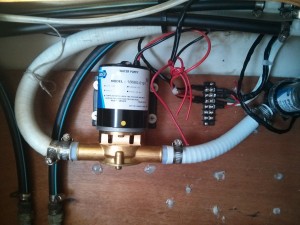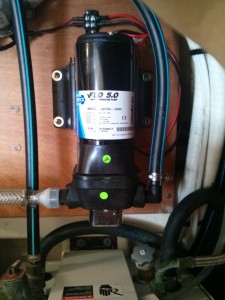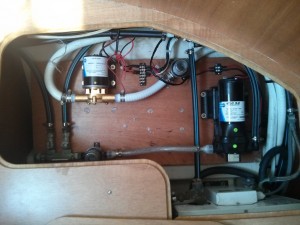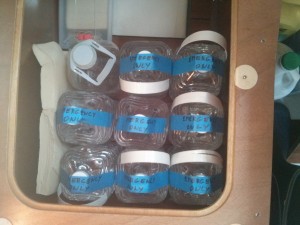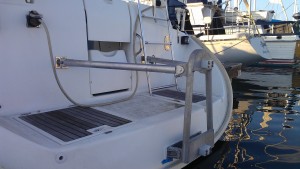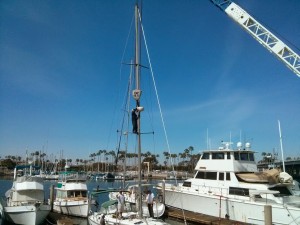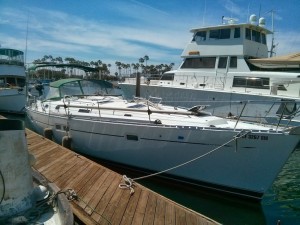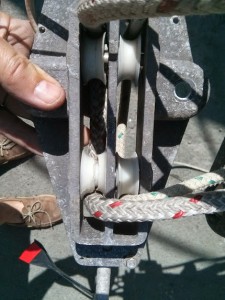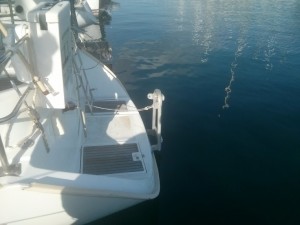As expected and predicted by the followers to our blog, the pumps that got submerged during the flooding got damaged. The bilge pumps failed immediately: it tripped the circuit breaker the first week after the incident.
The new bilge pump (which is really a sump pump) seems to be a little more sturdy than the old one. I still don’t have a high water alarm but this is definitely something that I will add before leaving.
The fresh water pump appeared to be more resilient but it started to sound a bit strange so I decided to do a preventive maintenance to anticipate the imminent failure!
The new freshwater pump has a variable speed motor. This means that we were able to remove the accumulator tank. The accumulator tanks provide “for smooth, steady water flow”. Bob was the first one to notice that the accumulator tank was actually full of rust and quite “smelly”. I was happy to get rid of it!
Bob was obviously present to help so the upgrade went very smoothly: only one additional trip to the hardware store per pump!

